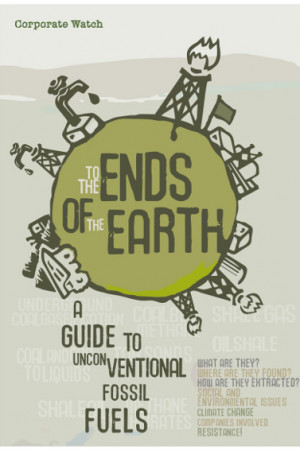Description
In 2008 Corporate Watch decided to begin writing to companies with allegations made about them by grassroots campaigners and publishing their responses. As we did so, we were drawn into several ‘engagements’ with companies designed to delay and mute dissent.
It was from these engagement exercises, some of which are described here by Tom Anderson in an article titled Dear Corporation, that we decided to produce this issue of the Corporate Watch Magazine, with the aim of exploring why corporations engage with the public and asking whether grassroots campaigners can ever win through engaging with companies.
Historically, corporations have engaged with workers through unions. Unions have become the mediators between the interests of corporations and workers, with the power dynamics of corporation/worker engagements varying according to the specifics of the workplace, company and workforce in question. In her article Partnership or Struggle?, Beth Lawrence examines the dynamics of such engagements in an era of declining union membership and co-option of many mainstream unions and looks forward to new collaborations between unions and grassroots movements.
Tom Anderson, in How Corporations Control their Public Image summarises how corporations have developed Corporate Social Responsibility (CSR) and Public Relations (PR) strategies to manage public perceptions of corporate activities.
Peter Jacobs, in NGO-Corporate Partnership, examines a case study of a mutually beneficial relationship between an NGO and a corporation. The engagement enabled each organisation to reach their own goals, but allowed the corporate status quo to continue and reinforced corporate values in the workplace.
In an article titled Green is the colour of money, Robert Palgrave examines how Blue NG romanced Greenpeace and Friends of the Earth, as well as celebrities and big name environmentalists, into making statements the company could use to counter grassroots dissent. Similarly, in Corporate Engagement at Hopenhagen, Hannah Schling explores how a group of companies emulated a popular campaign, through the Hopenhagen ‘movement’ at COP15, in order to give the impression that they were dealing with the ecological and social justice concerns raised by global justice movements.
Shiar Youssef provides a case study of how engagement with corporations was integrated into a campaign against corporate involvement in the deportation machine.
Corporations have carefully crafted their public personas with the help of PR companies. One of the largest and most controversial independent PR companies, Edelman, is therefore examined by Chris Kitchen, in this issue’s company profile.
A forum where activists often voluntarily engage with corporations is through ‘ethical investment’ and ‘divestment’ campaigns. Michael Deas and Elly Robson give two examples of such campaigns and argue that these can be forums for corporations to greenwash their business practices or tied to profit agendas. However, in the context of an effective movement employing a diversity of tactics, such as the Boycott, Divestment and Sanctions (BDS) movement against Israeli apartheid, such campaigns have achieved considerable success.
Before corporations engage with specific sections of the public, they have manufactured their image to society at large, meaning any engagements are already massively skewed in favour of corporate values. Beth Lawrence explores how corporations control public perception of emerging technologies in her article, Upstream Engagement.
Shiar Youssef, in When Private Interest is Public Interest, and Hannah Schling, in a Campaign Spotlight piece on the Campaign for Freedom of Information, explore the uses and limits of the Freedom of Information Act to anti-corporate campaigners.
When corporations choose to engage with campaigners, unionists, NGOs or the public at large, they do so to further their own ends. This type of engagement often serves as a public relations exercise, creating the facade that companies are dealing with the criticisms levelled at them. In other words, corporations may use engagements with the public as a tool to head-off further dissent.
This, however, does not mean that the only strategy is to sever all communications. It can sometimes be useful – for example, for grassroots campaigners – to have a channel of communication through which to negotiate with corporations and articulate demands. Unfortunately, the efficacy of these negotiations is often presented by ‘community leaders’, trade union bosses or CEOs of big NGOs as determined by how ‘reasonable’ we can be, the presentation of our argument or how well we can emulate the very corporations we are opposing. In reality, the success of these negotiations is determined by where the power lies: if our movements can present a tangible threat to corporate power, we will be more likely to be listened to. If not, activists engaging with corporations will be used as a tool to maintain business as usual.
Published in 2011.



